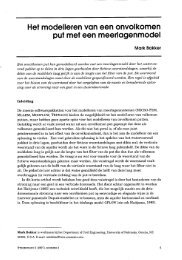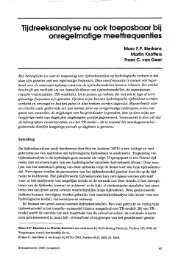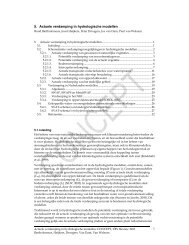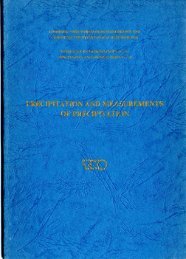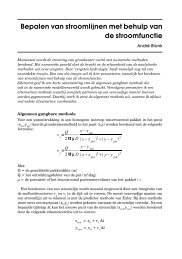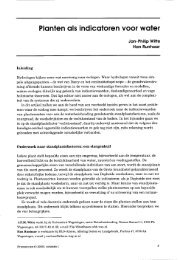Hydrochemistry and energy storage in aquifers - NHV.nu
Hydrochemistry and energy storage in aquifers - NHV.nu
Hydrochemistry and energy storage in aquifers - NHV.nu
You also want an ePaper? Increase the reach of your titles
YUMPU automatically turns print PDFs into web optimized ePapers that Google loves.
LABORATORY EXPERIMENTS ON BEHALF OF THE TNO-DGV TEST FACILITY<br />
FOR AQUIFER THERMAL ENERGY STORAGE AT DELFT, THE NETHERLANDS<br />
J. Griffioen<br />
ABSTRACT<br />
An aquifer thermal <strong>energy</strong> <strong>storage</strong> (ATES) cycle was simulated by <strong>in</strong>ject<strong>in</strong>g groundwater <strong>in</strong><br />
a sediment column at 90°C <strong>and</strong>, subsequently, <strong>in</strong>ject<strong>in</strong>g it <strong>in</strong> a column at 11°C to study<br />
aspects of the hydrogeochemical processes associated with ATES. For the heat <strong>storage</strong><br />
cycle, no thermodynamic equilibrium with end-member carbonates was found after a<br />
reaction time of 44 hours at 90°C. Fast precipitation occurs as long as Fe rema<strong>in</strong>s <strong>in</strong> solution.<br />
Prolonged precipitation of Ca, eventually with Mg, appears <strong>in</strong>hibited by o-PO4 <strong>and</strong><br />
organic acids. Desorption of K, NH4 <strong>and</strong> Fe upon temperature <strong>in</strong>crease of the system,<br />
occurs <strong>in</strong>itially. This buffer<strong>in</strong>g mechanism aga<strong>in</strong>st precipitation of carbonate is not sufficient,<br />
because of the small CEC of the sediment <strong>in</strong> comb<strong>in</strong>ation with the high hardness of<br />
the <strong>in</strong>jected groundwater. Weather<strong>in</strong>g of silicates leads to the release of Na, Ca <strong>and</strong> Mg. K<br />
<strong>and</strong> Si appear to be <strong>in</strong>corporated <strong>in</strong> secondary m<strong>in</strong>erals. Re<strong>in</strong>jection of heated groundwater<br />
<strong>in</strong> a cold column does only <strong>in</strong>duce desorption of Fe <strong>and</strong> Mn.<br />
1 INTRODUCTION<br />
Hydrogeochemical processes dur<strong>in</strong>g the operation of an ATES system need to be considered<br />
because they may seriously affect the system. Especially the potential of carbonate precipita-<br />
tion upon heat<strong>in</strong>g of groundwater needs attention, because many groundwaters show





